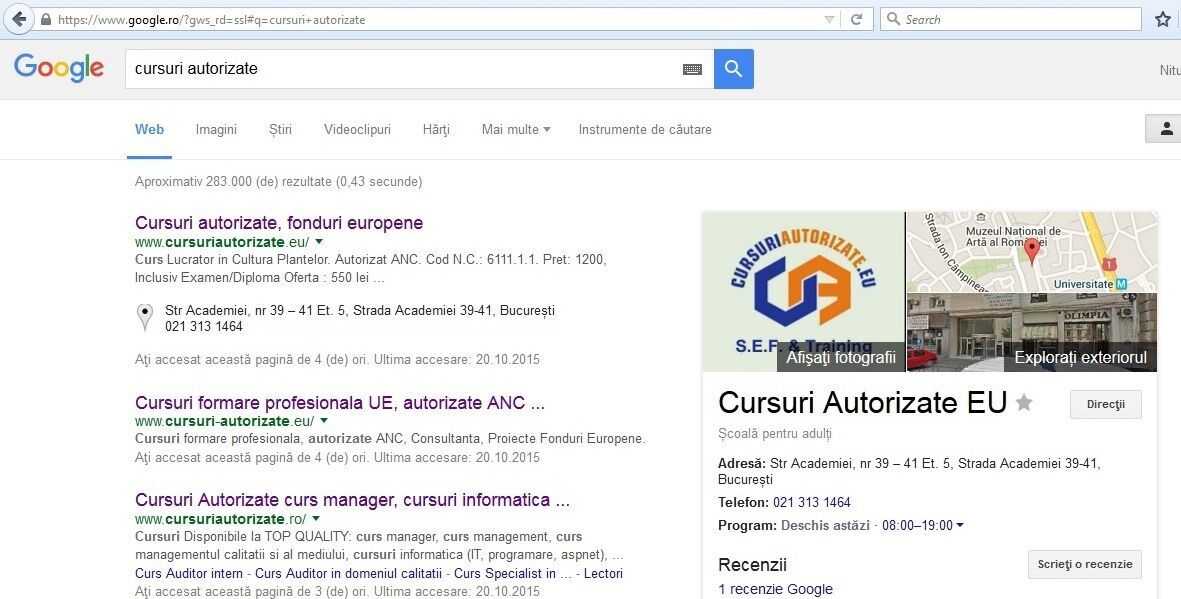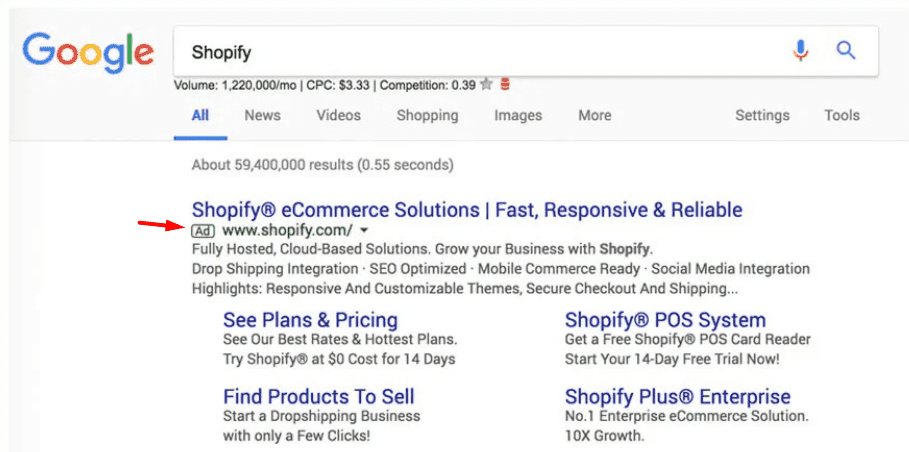Branded search queries bring users to your site. Increasing branded traffic helps to attract your target audience to your website and makes it more resistant to changes in the search algorithm changes. We talked to Mark Saether, head of SEO at Trustcorp, to find out what branded traffic is, its advantages, and to share with you some quirky ways to increase it.
SpySERP: What is branded traffic?
MS: Branded traffic refers to any website traffic that comes from visitors who type in keywords that include the name of the company (search query + the company's name).
Even during the digital technology era, branding continues to be a significant factor. Moreover, considering the changes in search engines' algorithms, this field of work will be even more valuable. A site of any well-known company almost certainly gets the majority of its visits from branded search. You can see it yourself with the standard analytics tools.
(Below you can see BBC top keywords. - SpySerp comment)

Although using general transactional queries is the main focus of the SEO strategy, don't underestimate branded traffic's potential. By including this specific trajectory into your primary strategy, you can get many beneficial results. (What are these benefits and how to boost your branded traffic? See down below. - SpySerp comment)
SpySERP: Why Branded Traffic Matters and What Are Its Benefits For Your Business?
MS: Irrespectively of whether you own a commercial or content project, an increased percentage of visitors coming directly from brand searches gives you a lot of great bonuses. I can tell you at least 7 advantages.
A higher CTR and your position in the SERPs
After at least a minimal on-site SEO, the site will always be on top of the search results page if the search query includes its name. If not in the first place, then at least in the Top-3.
A click-through rate is also higher in comparison with regular search queries. And considering that CTR depends highly on the position in the SERPs, return in terms of traffic is really good.
A higher conversion rate
With the "Mike Romney dental services" search query, you will have much less competition than just "dental services". Users look for a specific brand, which is more or less familiar to them. This fact also influences conversion metrics as we're talking about the further sales process. These people are already inclined to make a positive decision, and it's highly probable that they will buy a product or use a service. You can see why clothing stores focus on developing their brand so much.
More direct traffic
Some users have a habit of googling the name of the company and then clicking on a website, but there are also users that type a site URL directly into a search bar. And if your brand is well-known, this source can be the second-most valuable after organic search results.

This variety of traffic sources indirectly influences the way websites are ranked by search engines.
More organic backlinks
A brand's authority and popularity mean that eventually, users start to recommend it to other people, mention it in their posts, and link it on other sites. It's like a snowball effect: the more recognition the band has, the more different links lead to it, and the better rank it gets on a search page.
These mentions of your company, including mentions on social media, encourage people to visit the pages of your site and this, once again, makes your brand more popular.
Minimal dependency on searching algorithm changes
No matter the changes in the searching algorithms, if users type the name of the company in their search query, they will always see the website they were looking for right in the first spot (unless the website gets the penalty from Google). And I'm not even talking about type-in traffic when a site URL is entered right in the address bar. This ensures great stability, even when search results are having the "stormy" days.
Better engagement
Direct traffic and a good click-through rate, if there are lots of them, start to influence Google's attitude towards your site positively. This influence of behavioral factors becomes much more noticeable closer to the top and in highly competitive niches.
Some parameters influenced by branded traffic:
- number of page views;
- average time on site;
- returning visitor rate;
- variety of sources of traffic.
Indirect Influence On Non-Branded Traffic
If your site attracts a lot of visitors, even general non-branded search queries make it crawl higher in the rankings. You'll be able to reach more people through relevant keywords in autocomplete (Google suggester) as well.
There haven't been any extensive experiments proving these theories, but many of my colleagues confirm their own experience. Modern internet promotion is starting to look more and more like classical offline marketing. So it's not surprising that techniques aimed at reaching your target audience by your brand are becoming more and more valuable.
SpySERP: How To Boost Branded Traffic Stats?
MS: I can give you 8 foolproof methods. We've discussed the potential benefits of working on this subject, so consider some of the techniques we use to increase Google searches for brands and build brand awareness. They're not hard to implement, but you have to consider your budget and your company's peculiarities.
Content marketing
When using the term "content marketing," people usually imply developing a blog on a company's website. It's not wrong, but it's only partially right. Sure, writing articles that are interesting and helpful for your audience will positively affect your traffic, and some of the visitors will become your regular readers that will come back again and again. But anyhow you'll be limited within your platform and your traffic.
Therefore, in addition to creating content for your own website, it's necessary to branch out to other venues: web portals, media, blogs, etc. This way, you'll be able to promote your brand and increase its recognition on various boards, reaching substantially more people.
Using web aggregators
In this case, I'm talking about all kinds of news feeds, popular networks, and online communities that, in many cases, occupy first places in search results.
Maintaining properly designed pages on such resources may help you find another common ground with your potential clients by association with a credible website; and in most cases - it's completely for free.
A broader presence in the search results
When done properly, image SEO optimization, adding your business on the map (in Google My Business), and a well-designed project structure can help significantly increase your presence in the SERPs for a number of keywords.
(For example, instead of a single-line snippet, your user may see this “rich” results - SpySerp comment):

Rich snippets look much more engaging. And much more memorable than your run-off-the-mill snippets.
Buy multiple Google Ads on searches for your brand name
Relying entirely on organic search results is great, but with an additional advertising campaign on searches for your name, you'll dominate the SERPs.

Many large brands use this approach since it allows you to prevent unwanted information, like negative reviews or news from other sites, getting in your clients' sight. Or, most importantly, ads from your competitors that might try to advertise their companies using your name. Showing banner ads on partner's websites within one display network is also a valid way of increasing brand awareness and/or introducing a new product to the market.
Targeted ads on social media
You won't get a lot of traffic using this strategy (especially in B2B), but advertising is usually cheaper than with other channels. And if your business is targeting the local market, it might be quite profitable, too. This is an interesting alternative to Google Display Ads.
Interact with the audience
This includes not only promotional campaigns and sales, which can attract customers even better than advertisement, but also after-sales services, free consultation about the product, and other similar perks.
You can interact with the target audience not just on your website, but on other venues as well. For example, customer support can contact users on review sites, social media, and price catalogs.
Online platform presence
By creating social media accounts, YouTube channels, and being active in various online communities, you can fully leverage those platforms and make them benefit your online presence.
The best strategy, in this case, would be not focusing on direct sales, but genuinely trying to help your potential clients. Share useful advice, help them make the right decisions, tell them how to deal with the possible problems when using your product or service.
Offline presence
Usually, the most troublesome things for entrepreneurs who mainly operate online. But I highly recommend this strategy if you're dealing with a business targeted on the local market.
Here are some offline activity ideas you can use:
- Ads in local printed media;
- Giving out flyers, brochures, etc.
- Participating in niche events (exhibits, conferences, forums);
- Conducting free educational seminars and workshops (for B2B), organizing events, etc.
This may seem like old school marketing, but these methods really work. You can track the return by using promo codes, add discounts linked to certain offline activities, track geographic and demographic data, and much more.





